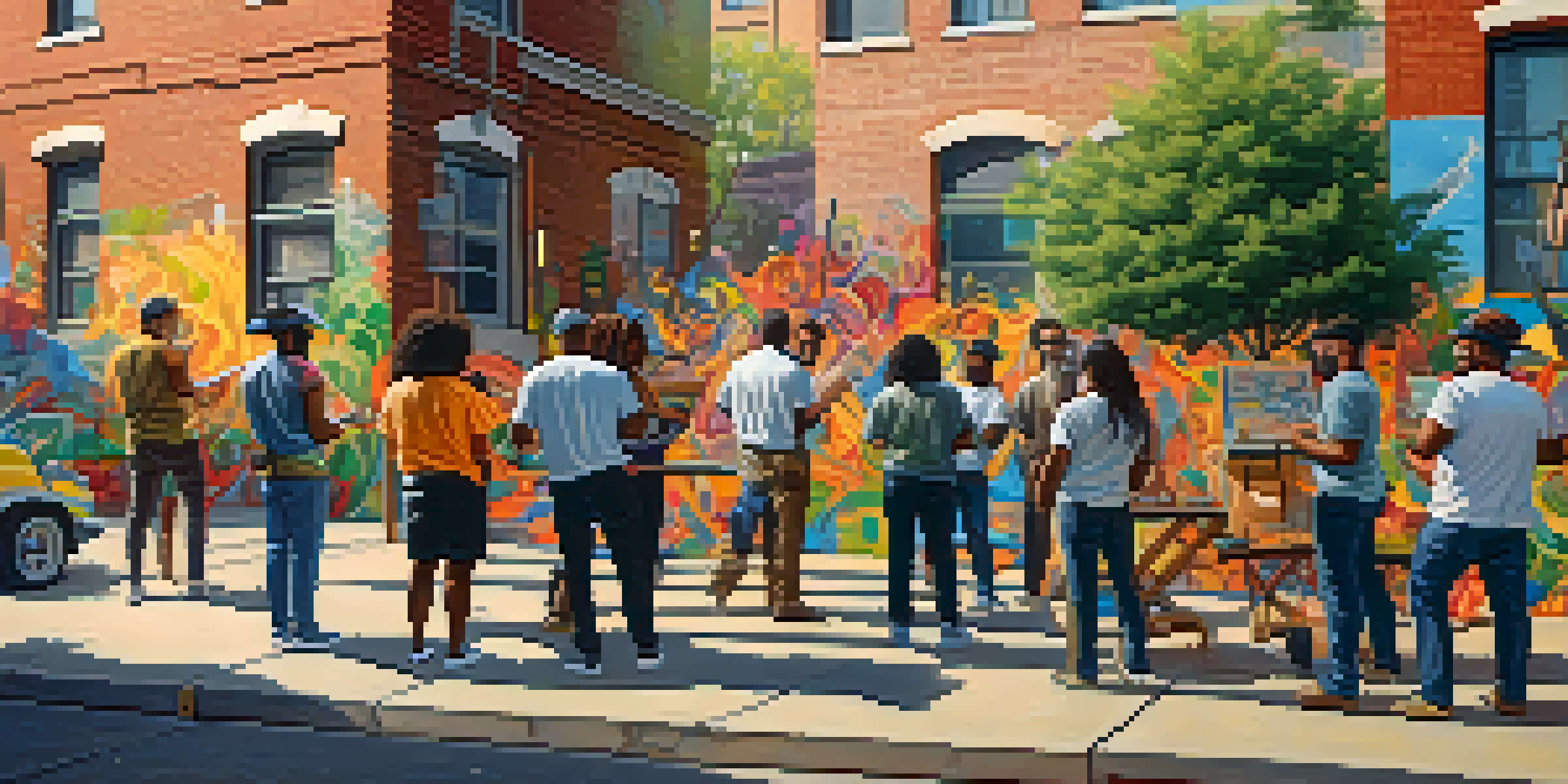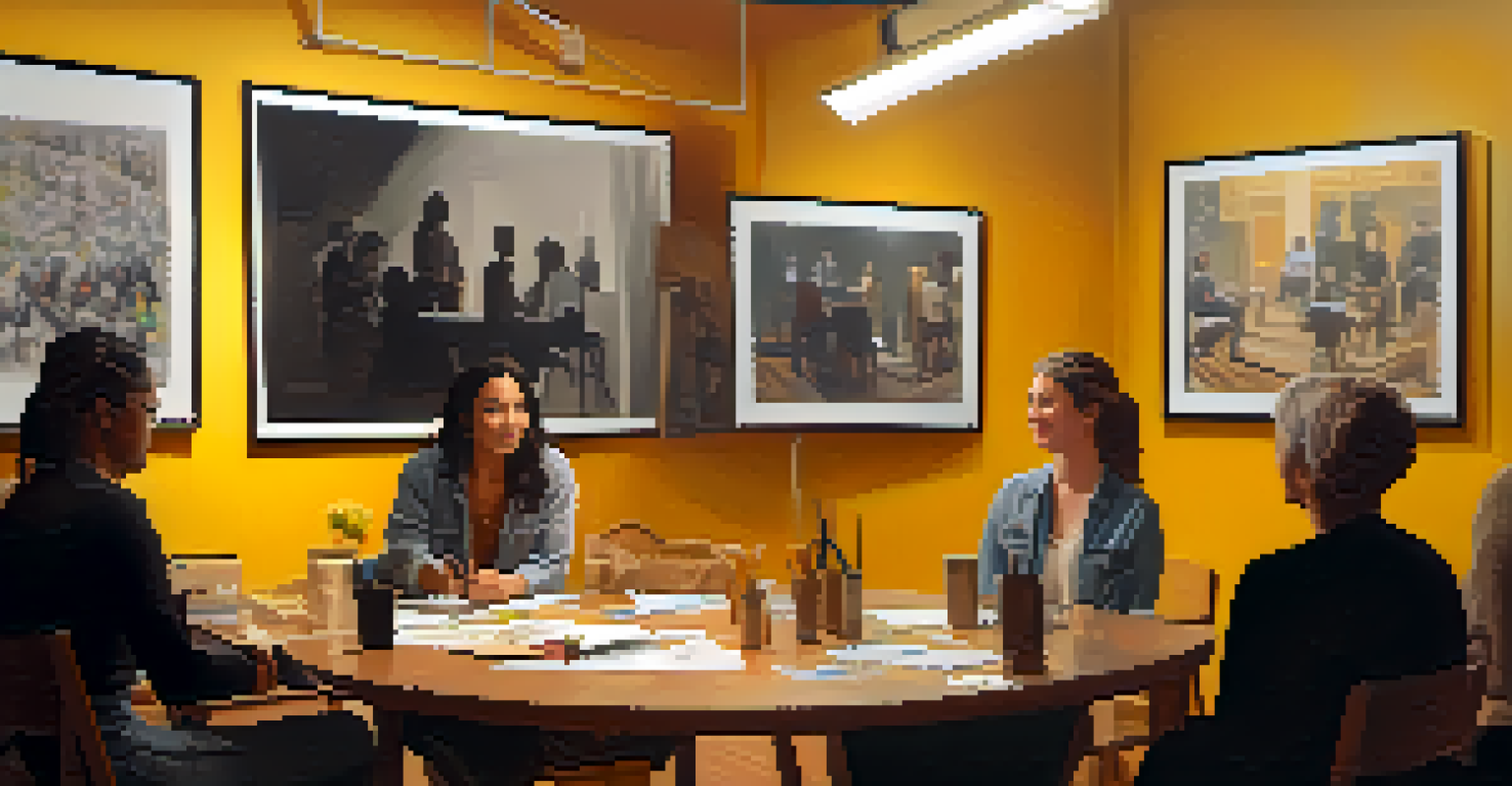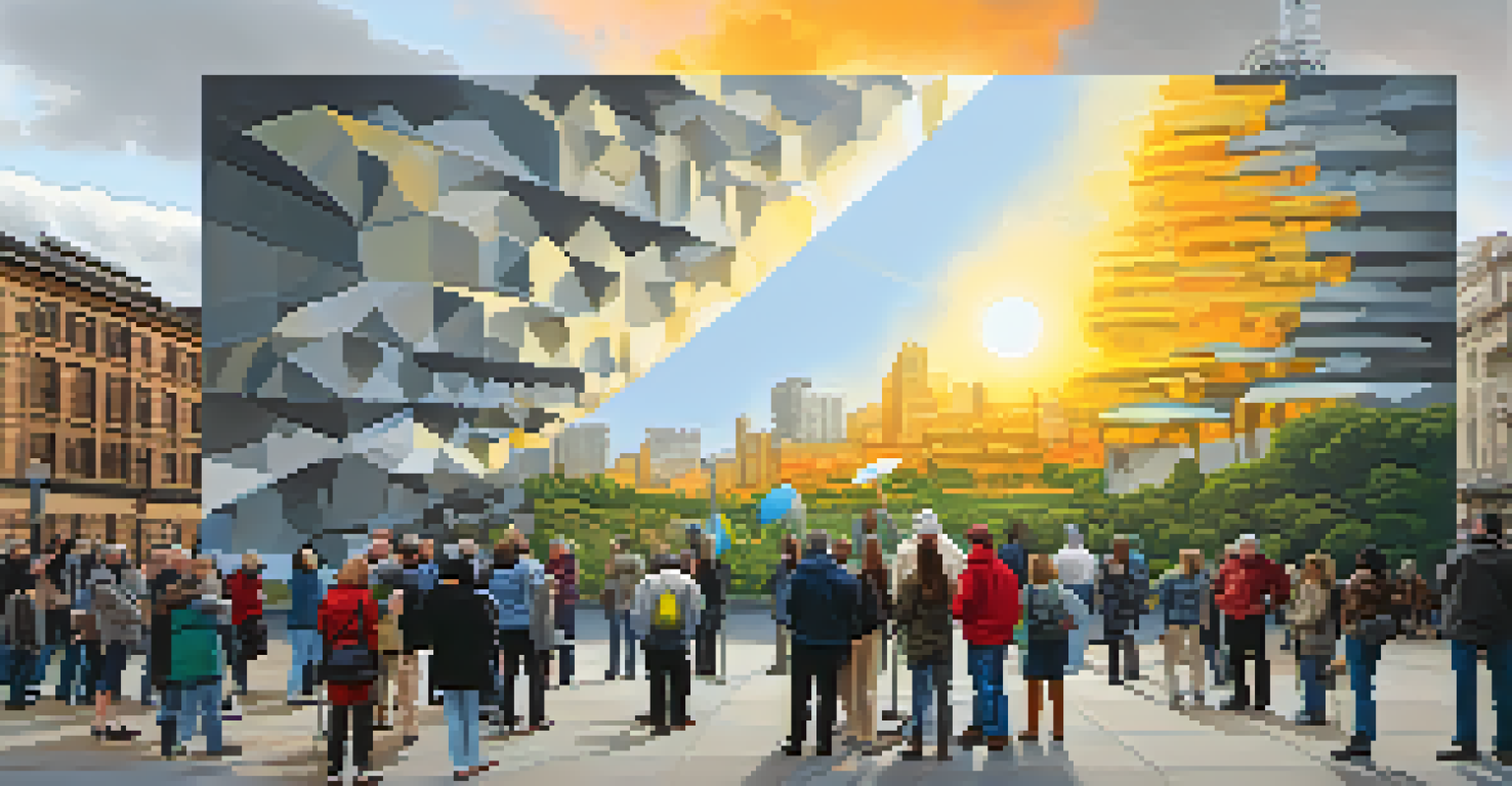The Role of Art Collectives in Social Resistance Movements

Understanding Art Collectives and Their Purpose
Art collectives are groups of artists who collaborate to create and promote art, often with a shared vision or mission. These collectives serve as platforms for artists to express their creativity while addressing social and political issues. By pooling their resources and talents, members can amplify their voices and reach a broader audience than they could individually.
Art is not a mirror held up to reality, but a hammer with which to shape it.
These groups often focus on themes that resonate with their communities, using art as a medium for storytelling and advocacy. For instance, collectives may tackle subjects such as racial injustice, environmental concerns, or gender equality, making their work relevant and impactful. The collaborative nature of these collectives fosters a sense of unity and shared purpose, which is crucial in social resistance movements.
Ultimately, art collectives not only contribute to the art world but also play a crucial role in shaping public discourse. They create a space where diverse perspectives can be shared and explored, encouraging dialogue and understanding among different communities.
Historical Context of Art Collectives in Resistance
Art collectives have a long history of involvement in social resistance movements, dating back to significant historical moments. For instance, during the Civil Rights Movement in the United States, artists came together to produce powerful imagery that challenged systemic racism. These collectives used their art to raise awareness and inspire action, demonstrating the power of creativity in driving social change.

Similarly, in Latin America, collectives emerged in response to political oppression and censorship. Artists worked collaboratively to create murals and installations that spoke to the struggles of their communities, turning public spaces into canvases for resistance. This historical context highlights how art has been a vital tool for marginalized voices seeking to reclaim their narratives.
Art Collectives Amplify Voices
Art collectives unite artists to amplify their voices and address social issues through collaborative creativity.
The legacy of these early collectives continues to influence contemporary movements, reminding us that art can be a catalyst for social transformation. By learning from the past, current collectives can draw inspiration and strategies to effectively advocate for change today.
The Power of Visual Storytelling in Activism
Visual storytelling is a powerful tool used by art collectives to engage audiences and convey complex issues. Through striking imagery and symbolism, artists can evoke emotions and provoke thought, often in ways that words cannot. This ability to communicate visually allows collectives to reach diverse audiences, transcending language barriers and cultural differences.
The role of the artist is to make the revolution irresistible.
For example, the work of the Guerrilla Girls, an anonymous group of feminist artists, challenges the art world’s gender inequalities through provocative posters and public interventions. Their visual campaigns not only educate the public but also inspire action, demonstrating how impactful storytelling can be in activism. By using humor and bold graphics, they effectively convey serious messages in an accessible manner.
As social media continues to evolve, the influence of visual storytelling has only grown. Art collectives can now share their work widely and instantly, creating a ripple effect that amplifies their messages and mobilizes support for various causes.
Creating Safe Spaces for Marginalized Voices
Art collectives often serve as safe spaces for marginalized voices, providing artists with a platform to express their experiences and perspectives. These spaces encourage experimentation and innovation, allowing members to explore themes that may be overlooked or silenced in mainstream discourse. By fostering an inclusive environment, collectives help empower artists who might otherwise feel isolated in their struggles.
For instance, collectives focused on LGBTQ+ rights have created art that challenges societal norms and promotes acceptance. By sharing their stories through various art forms, these collectives help to raise awareness and foster understanding within their communities. The collaborative nature of these spaces also encourages solidarity and support among members, reinforcing the importance of community in resistance efforts.
Visual Storytelling Drives Activism
Through powerful imagery and symbolism, art collectives utilize visual storytelling to engage audiences and provoke thought.
In this way, art collectives not only amplify individual voices but also contribute to the broader narrative of social justice. By prioritizing inclusivity and representation, they challenge dominant narratives and pave the way for a more equitable society.
Collaboration with Other Movements and Organizations
Collaboration is a key characteristic of art collectives, and many actively partner with social movements and organizations to strengthen their impact. By aligning their artistic endeavors with ongoing efforts for change, they can reach a wider audience and enhance the effectiveness of their messages. This synergy between art and activism creates a dynamic force for social resistance.
For example, art collectives often collaborate with grassroots organizations to produce public art projects that raise awareness about specific issues, such as climate change or housing rights. These partnerships not only provide resources and support but also create opportunities for community engagement and dialogue. Together, they can mobilize efforts and inspire collective action.
Furthermore, such collaborations can lead to innovative approaches to activism, merging artistic creativity with strategic planning. By working together, art collectives and movements can create campaigns that resonate deeply with the public, ultimately fostering a stronger sense of community and shared purpose.
Challenges Faced by Art Collectives in Resistance Work
While art collectives play an essential role in social resistance movements, they also face significant challenges. Funding is often a primary concern, as many collectives rely on grants and donations to sustain their operations. This can limit their ability to create impactful work or reach larger audiences, especially when navigating bureaucratic processes and competition for resources.
Moreover, art collectives may encounter resistance from institutions or individuals who are threatened by their messages. Censorship, backlash, and even physical threats can arise when challenging the status quo through art. This highlights the risks that artists take in their pursuit of social justice, as their work may provoke strong reactions from those in power.
Collaboration Fuels Social Change
By partnering with movements and organizations, art collectives enhance their impact and foster community engagement in social resistance.
Despite these challenges, many collectives persist in their mission, driven by the belief in the transformative power of art. Their resilience in the face of adversity serves as a testament to the importance of creative expression in advocating for change.
The Future of Art Collectives in Social Resistance
The future of art collectives in social resistance movements looks promising, as more artists recognize the power of collaboration. As social issues continue to evolve, collectives are adapting their approaches to resonate with new generations. By embracing technology and innovative platforms, they can engage audiences in fresh and compelling ways, ensuring their messages remain relevant.
Additionally, the growing emphasis on intersectionality in activism encourages art collectives to broaden their focus and support diverse voices. This expansion allows for a richer tapestry of narratives, ultimately enhancing the collective’s impact on social resistance. By fostering inclusivity, these collectives can create art that speaks to a wider audience and addresses multiple layers of injustice.

Ultimately, the role of art collectives in social resistance movements will continue to be vital as they navigate the challenges and opportunities of the future. Their ability to inspire, mobilize, and foster community will ensure that art remains a powerful force for change in society.